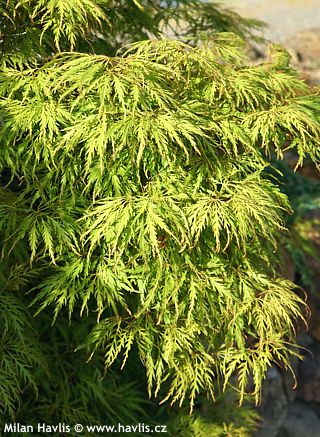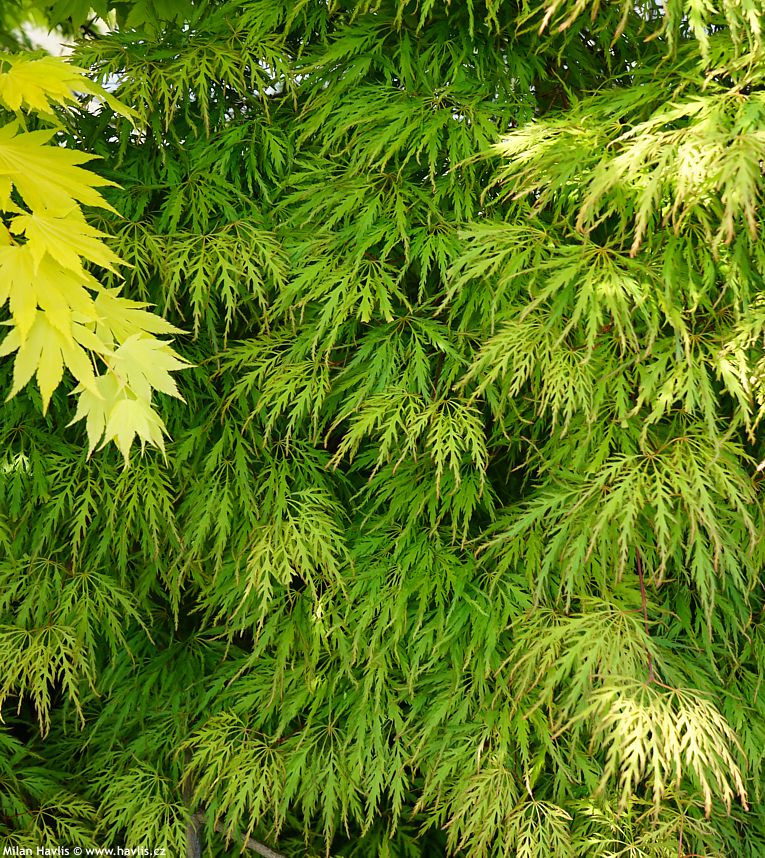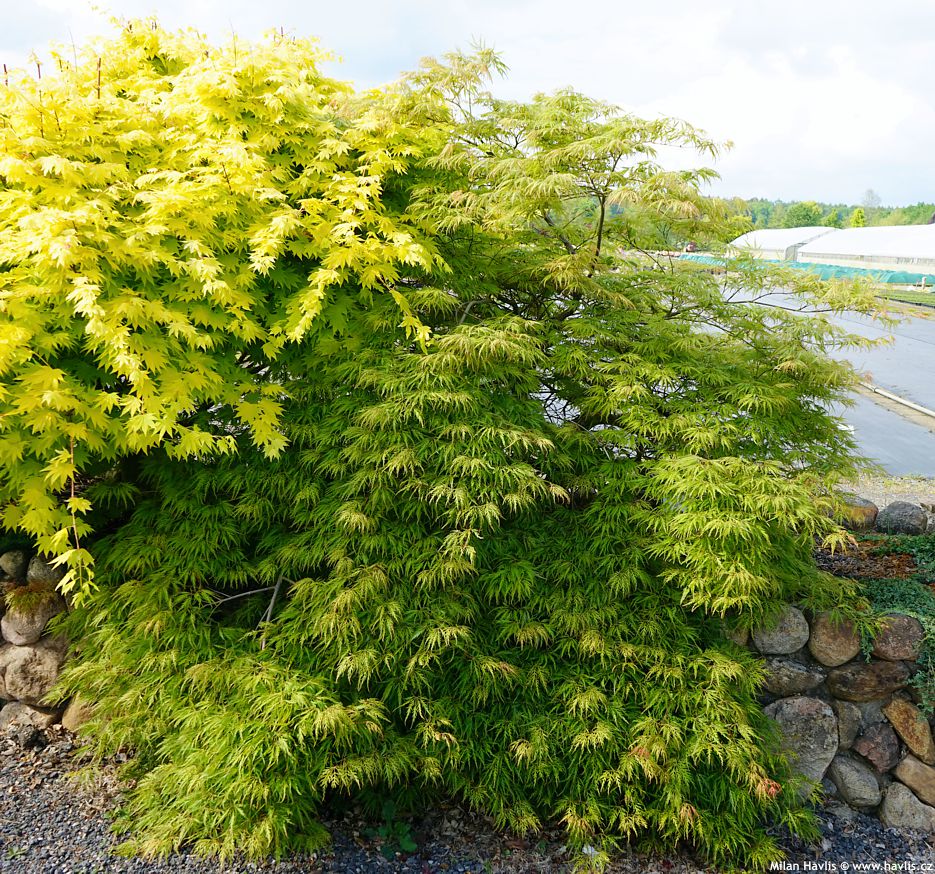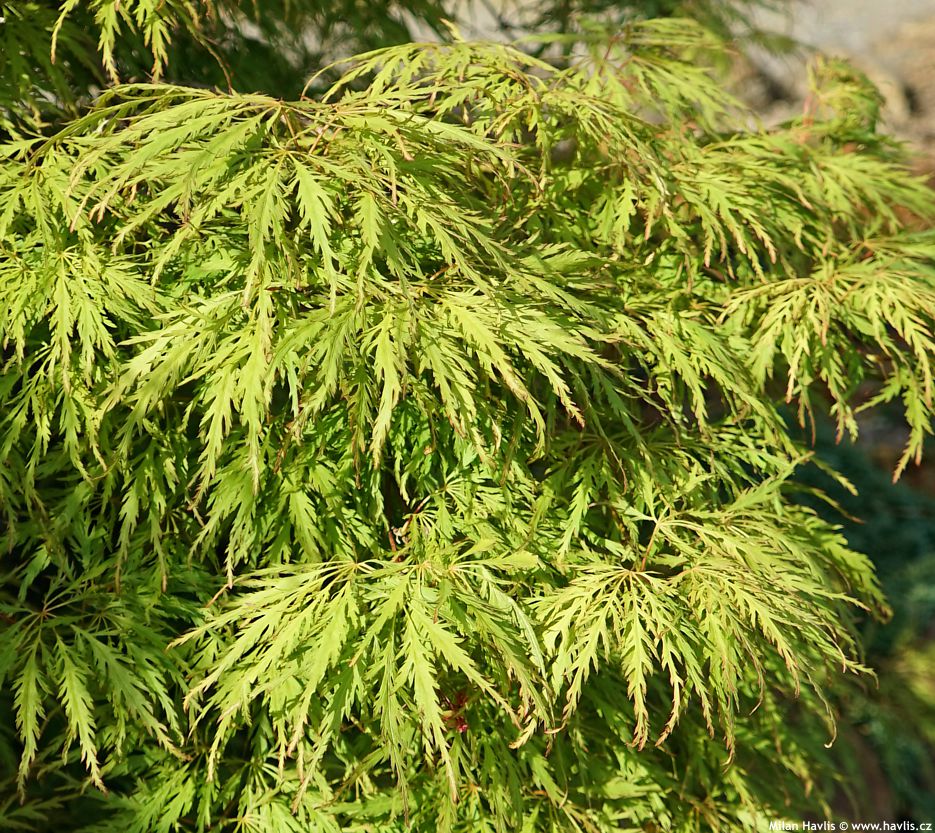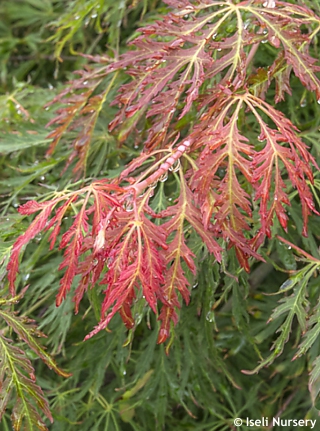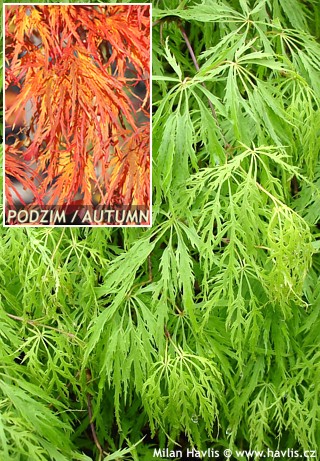Acer palmatum (Dissectum group) 'GREEN GLOBE' Japanese maple
size/type
medium-sized shrub,small tree
usual height
2-4m
usual width
2-3,5m
leaves
deciduous broadleaf
colour of leaves
location
full to partial sun
soil type
acidic (peaty) to neutral
soil moisture requirements
evenly moist (dislikes drought)
USDA zone (lowest)
5 (down to -29°C)
winter protection
for zone 5+6

for zone 7

categorized
Description of the plant:
Green Globe is a cut-leaved variety of Japanese maple from the Dissectum group. Its leaves are almost identical to Dissectum variety but its habit is very different. The fine, lace-like leaves are deciduous, deeply incised, and firmer compared to older varieties whose foliage is rather pendent. They emerge soft green with bronze hues and turn fiery shades of orange and red in autumn. Along with new leaves appear small, garnet red flowers.It forms a strong, evenly upright and spreading habit with a strong framework of non-arching branches. It grows slowly but in maturity can reach about 4 m in height and a bit less in width. Which rates him the tallest among dissectum maples, yet it may take some 30-40 years to grow so high. Its natural habit is dome-shaped to globose and can be pruned or trimmed to shapes, ideally in frost-free periods of winter.
Green Globe Japanese maple is happy in full sun as well as in part-shade. Its leaves are not prone do sunscorch and if you see dry and curled leaf tips, it is very likely not due to lack of moisture but a manifestation of a disease (moniliosis or anthracnose) which needs to be cured.
Japanese maples need constantly moist soil that has to be well-drained, acidic to neutral, and medium fertile. Keep it mulched all year round. It loves a location with high air humidity, e.g. at a river bank or near a pond but it is not a must. Green Globe maple withstands full sun in constantly moist soil, and naturally grows in partial shade, too. Full shade is not recommended. It is hardy to at least -29 °C (USDA zone 5), and is suitable for outdoor planters, too, if kept moist but without a saucer.
Last update 27-02-2023
WANT TO TRY A SIMILAR PLANT?












